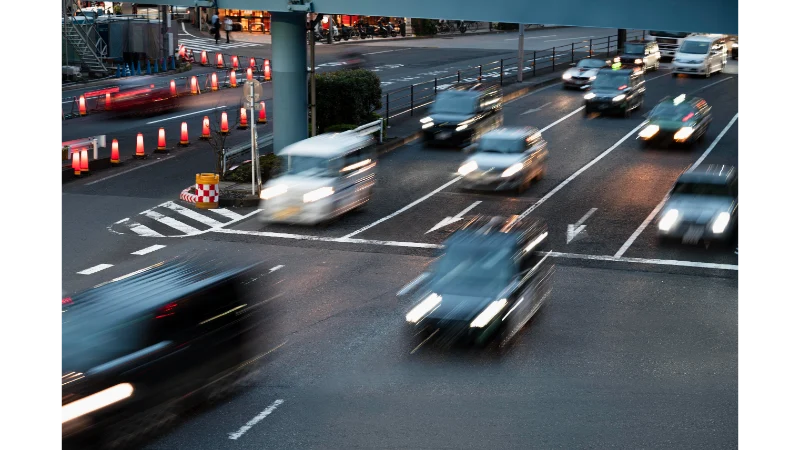In today’s rapidly urbanizing world, ensuring road safety has become a pressing concern for city planners and transport authorities. The exponential rise in vehicle numbers, coupled with increasing driver distractions and disregard for traffic rules, has led to a surge in urban road accidents. Among the leading causes of these accidents is the violation of traffic signals—a behavior that not only endangers the violator but also puts other road users at serious risk.
To combat this persistent issue, cities across the globe are turning to traffic signal violation detection systems—smart technologies that automatically monitor, identify, and report red-light infractions. These systems are emerging as essential tools in the mission to build safer, smarter urban environments.
Why Traffic Signal Violations Are So Dangerous
Red-light violations typically occur at intersections, which are among the most complex and hazardous parts of the road network. Vehicles traveling in different directions, pedestrians crossing streets, and time-based traffic signals create a dynamic environment where any breach of protocol can lead to severe collisions.
Common consequences of red-light running include:
- Side-impact crashes (T-bone accidents), which are often fatal due to the lack of side protection in vehicles.
- Pedestrian injuries, especially in crosswalks when drivers try to “beat the light.”
- Chain-reaction collisions, where multiple vehicles are affected by a single violation.
These accidents not only result in loss of life and property but also strain emergency services and cause significant traffic disruptions. Enforcing compliance at intersections is, therefore, a high-impact strategy to reduce urban road incidents.
Understanding Traffic Signal Violation Detection Systems
Traffic signal violation detection is a technology-driven method used to identify vehicles that fail to stop at a red signal. It typically employs a combination of high-speed cameras, sensors, and intelligent algorithms to monitor intersection activity. When a vehicle crosses the stop line after the signal turns red, the system captures images or video of the violation, logs vehicle details, and generates a violation report for further action.
These systems operate autonomously, reducing the need for physical police presence while ensuring 24/7 enforcement. They also maintain a consistent and unbiased record of infractions, which helps in establishing accountability and supporting legal processes.
Traffic signal violation detection systems have been successfully deployed in numerous global cities, with evidence pointing to a significant drop in red-light running incidents after their implementation.
The Role of Video Analytics in Enhancing Detection
One of the most transformative elements of modern traffic enforcement is the integration of video analytics. By using artificial intelligence and machine learning, these systems go beyond simple recording to enable real-time analysis and intelligent decision-making. As AI video analytics improves operational efficiencies, it allows authorities to monitor traffic patterns, detect violations instantly, and respond proactively—ultimately enhancing both safety and resource management.
In the context of traffic signal violations, video analytics can:
- Identify license platesusing OCR (optical character recognition) for offender tracing.
- Differentiate between types of violations, such as red-light running, lane changing at intersections, or stopping beyond the line.
- Generate real-time alertsfor violations, allowing immediate action if required.
- Maintain detailed violation logs, including time stamps, location data, and vehicle details for accurate reporting and auditing.
Furthermore, these systems can be calibrated to accommodate local traffic behaviors, light timings, and lane structures, ensuring that enforcement is both fair and context-aware.
Measurable Impact on Urban Road Safety
Deploying traffic signal violation detection systems has shown measurable success in reducing accidents in urban areas. Some of the key impacts include:
- Deterrence through visibility: The presence of cameras and detection systems acts as a psychological deterrent, encouraging drivers to obey traffic signals.
- Reduction in fatalities and injuries: Intersections monitored by automated systems report significantly fewer side-impact crashes and pedestrian injuries.
- Improved driving discipline: Regular enforcement leads to long-term behavior change among drivers, making city driving more predictable and safer.
- Efficient resource allocation: Law enforcement agencies can focus on more strategic tasks, as the system automates routine monitoring and documentation.
These outcomes not only make urban roads safer but also contribute to better traffic flow, reduced congestion, and enhanced commuter confidence.
Addressing Challenges and Ensuring Fairness
While traffic signal violation detection systems are powerful tools, their deployment must be managed carefully to ensure public trust and legal compliance. Key considerations include:
- Accuracy and calibration: Systems must be rigorously tested to avoid false positives, which can lead to unwarranted penalties.
- Data privacy: Captured data should be stored securely, anonymized where necessary, and accessed only by authorized personnel.
- Public awareness: Transparent communication about system use, data handling, and penalty processes helps build community support and cooperation.
- Legal frameworks: Implementation should be aligned with local regulations, with clear guidelines on enforcement, appeals, and data usage.
A balanced approach that combines enforcement with education and transparency is key to long-term success.
Conclusion
Traffic signal violations are a major contributor to urban road accidents, but technology is providing a scalable and effective solution. By leveraging automated traffic signal violation detection and integrating it with advanced video analytics, cities can significantly reduce accidents, improve driver behavior, and build a safer, more efficient road network.
Enforcement no longer has to be reactive or limited by human constraints. With intelligent systems in place, urban safety can be proactive, data-driven, and remarkably effective. My site.


